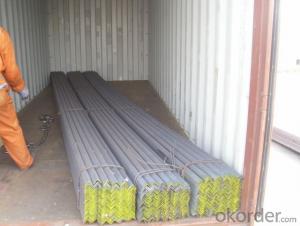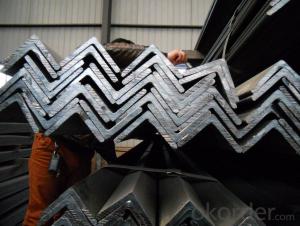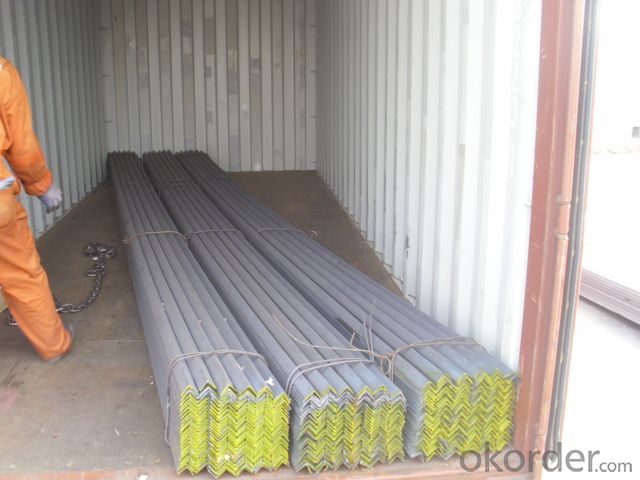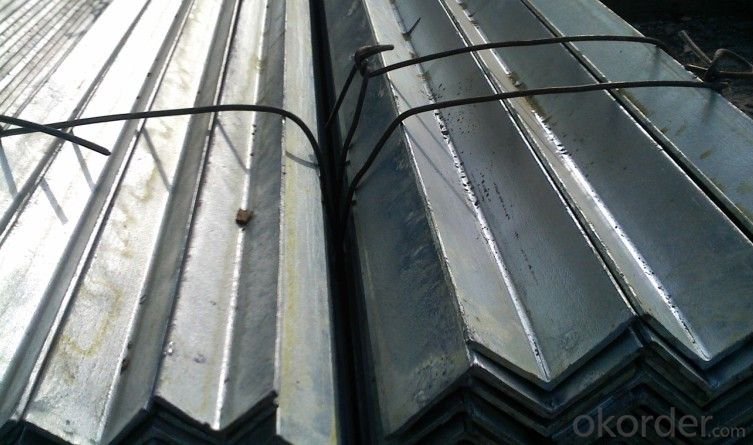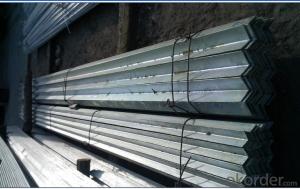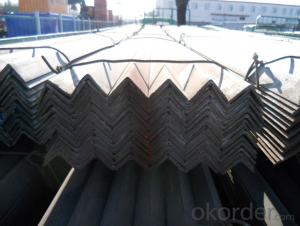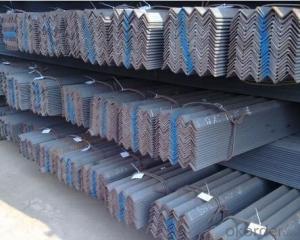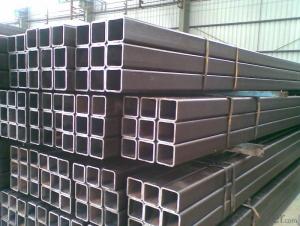Stainless GB,ASTM,BS,AISI,DIN,JIS Angle Steel
- Loading Port:
- Tianjin
- Payment Terms:
- TT OR LC
- Min Order Qty:
- 50 m.t.
- Supply Capability:
- 5000 m.t./month
OKorder Service Pledge
OKorder Financial Service
You Might Also Like
1. Structure of Angle Steel Description
Angle steel has equal angle, unequal angle.
Standards: GB,ASTM,BS,AISI,DIN,JIS
Invoicing on theoretical weight or actual weight as customer request
Material:Material: GB Q235B, Q345B or Equivalent; ASTM A36; EN 10025, S235JR, S355JR; JIS G3192, SS400; SS540.
2.Usage & Applications Stainless GB,ASTM,BS,AISI,DIN,JIS Angle Steel
Trusses;
Transmission towers;
Telecommunication towers;
Bracing for general structures;
Stiffeners in structural use.
3.Packaging & Delivery of Stainless GB,ASTM,BS,AISI,DIN,JIS Angle Steel
1. Transportation: the goods are delivered by truck from mill to loading port, the maximum quantity can be loaded is around 40MTs by each truck. If the order quantity cannot reach the full truck loaded, the transportation cost per ton will be little higher than full load.
2. With bundles and load in 20 feet/40 feet container, or by bulk cargo, also we could do as customer's request.
3. Marks:
Color mark: There will be color marking on both end of the bundle for the cargo delivered by bulk vessel. That makes it easily to distinguish at the destination port.
Tag mark: There will be tag mark tied up on the bundles. The information usually including supplier logo and name, product name, made in China, shipping marks and other information request by the customer.
If loading by container the marking is not needed, but we will prepare it as customer request.
Production flow of JIS SS400 Angle Steel
Material prepare (billet) —heat up—rough rolling—precision rolling—cooling—packing—storage and transportation
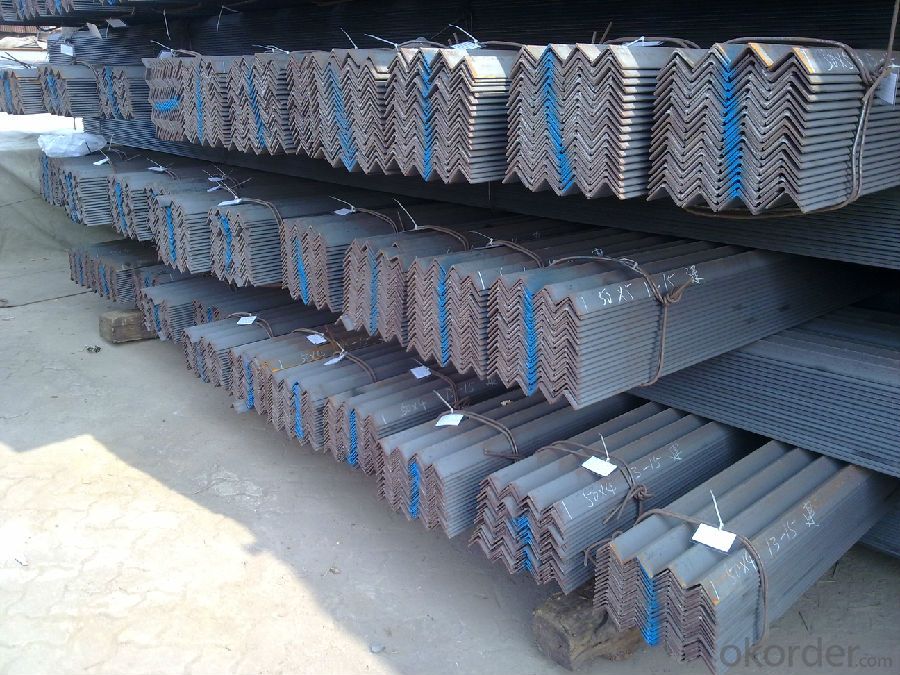
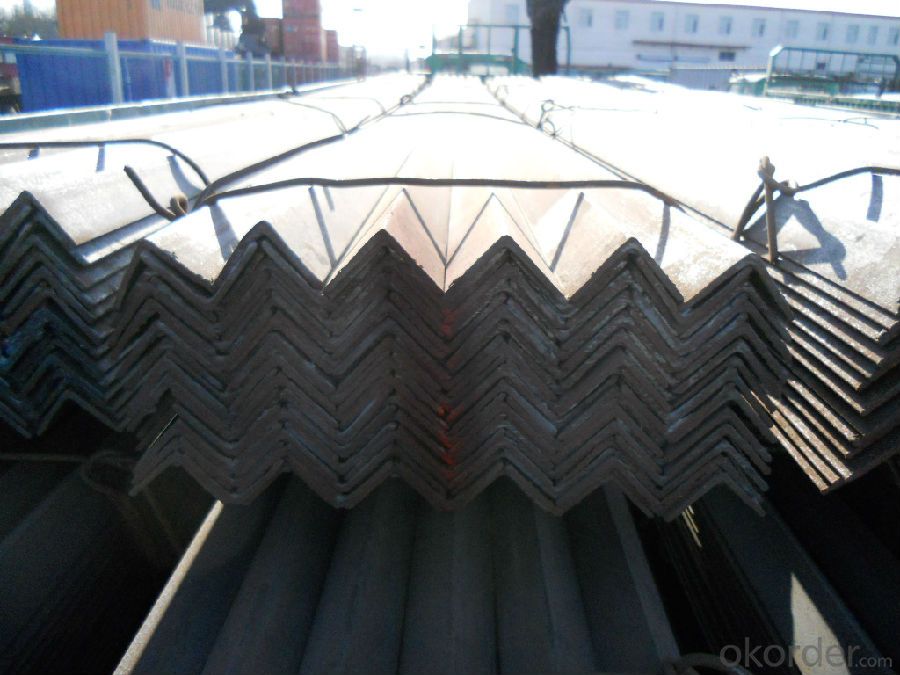
4.FAQ
We have organized several common questions for our clients,may help you sincerely:
①How about your company?
A world class manufacturer & supplier of castings forging in carbon steel and alloy steel,is one of the large-scale professional investment casting production bases in China,consisting of both casting foundry forging and machining factory. Annually more than 8000 tons Precision casting and forging parts are exported to markets in Europe,America and Japan. OEM casting and forging service available according to customer’s requirements.
②How to guarantee the quality of the products?
We have established the international advanced quality management system,every link from raw material to final product we have strict quality test;We resolutely put an end to unqualified products flowing into the market. At the same time, we will provide necessary follow-up service assurance.
③How long can we receive the product after purchase?
- Q: What is the maximum load capacity of a steel angle?
- The maximum load capacity of a steel angle depends on various factors such as the dimensions, thickness, grade, and quality of the steel used. Generally, steel angles are designed to withstand significant loads due to their structural nature. However, it is important to consult engineering specifications and relevant building codes to determine the specific maximum load capacity of a steel angle in a given application. The load capacity is typically calculated by considering the angle's cross-sectional area, the material's yield strength, and the applied load factors. Additionally, factors such as the angle's length, support conditions, and the presence of any additional reinforcement or bracing can also influence the maximum load capacity. It is crucial to ensure that the steel angle is properly selected, designed, and installed to safely support the intended loads and meet the required structural standards.
- Q: What are the different methods of cutting steel angles?
- There are several methods for cutting steel angles, including using a bandsaw, a chop saw, an angle grinder with a cutting wheel, or a plasma cutting machine. Each method has its own advantages and considerations, such as the desired precision, speed, and cost. The choice of method depends on the specific requirements of the project and the available equipment.
- Q: How do steel angles perform in terms of thermal conductivity?
- Steel angles have relatively low thermal conductivity compared to other materials. This means that they are not as efficient in conducting heat as materials such as aluminum or copper. However, steel angles still have moderate thermal conductivity, which allows them to dissipate heat to some extent. This property can be advantageous in certain applications where heat transfer needs to be controlled or balanced. Overall, while steel angles may not have the highest thermal conductivity, they still offer sufficient performance for many structural and construction purposes.
- Q: What is the maximum length of a continuous steel angle?
- Several factors determine the maximum length of a continuous steel angle, including its size, weight, transportation and handling limitations. Typically, the maximum length is restricted to what can be safely transported and handled by equipment like cranes or forklifts. This limit can vary based on the capabilities of the equipment and any transportation restrictions. The manufacturing process may also limit the length, as longer angles may be more challenging to produce or require specialized equipment. Ultimately, the maximum length should be determined based on the project's specific requirements and constraints, taking into account these factors.
- Q: How do steel angles perform under cyclic loading?
- Steel angles are widely used in various structural applications due to their excellent strength and stiffness properties. When subjected to cyclic loading, which refers to repeated loading and unloading cycles, steel angles perform exceptionally well. Under cyclic loading, steel angles exhibit a phenomenon known as fatigue, which is the progressive and localized structural damage that occurs when a material is subjected to repeated loading and unloading. However, steel angles have a high fatigue resistance, making them highly suitable for applications where cyclic loading is expected. The key factor contributing to the performance of steel angles under cyclic loading is their material properties. Steel, being a ductile and resilient material, is able to deform and absorb energy under cyclic loading, thereby preventing the accumulation of stress concentrations that could lead to failure. Moreover, steel angles are typically designed with a sufficient factor of safety to withstand cyclic loading without compromising their structural integrity. This ensures that they can endure numerous cycles of loading and unloading without experiencing significant deformation or failure. In addition to their inherent material properties, the structural design and fabrication of steel angles also play a crucial role in their performance under cyclic loading. Proper design, including consideration of the expected loading conditions and appropriate reinforcement, ensures that steel angles can withstand cyclic loading without experiencing excessive deformation or stress concentrations. Overall, steel angles are well-suited for applications involving cyclic loading due to their high fatigue resistance, ductility, and structural design considerations. Their ability to withstand repeated loading and unloading cycles makes them a reliable and durable choice in various structural systems.
- Q: Do steel angles require any special maintenance?
- Steel angles do not require any special maintenance, but proper care and attention can help prolong their lifespan. Regular cleaning to remove dirt, debris, and corrosive substances is recommended. It is also important to inspect the angles for any signs of rust, cracks, or damage, and address them promptly to prevent further deterioration. Applying a protective coating or paint can help prevent corrosion and extend the life of the steel angles. Overall, while steel angles are generally low-maintenance, regular inspections and maintenance practices can help ensure their optimal performance and longevity.
- Q: Can steel angles be galvanized or coated for corrosion resistance?
- Yes, steel angles can be galvanized or coated for corrosion resistance. Galvanizing is a common method used to protect steel from corrosion by applying a layer of zinc to the surface. This process creates a barrier between the steel and the external environment, preventing the formation of rust. Coating steel angles with corrosion-resistant materials such as epoxy or powder coatings is another option to enhance their resistance to corrosion. These coatings act as a protective layer, preventing moisture and other corrosive elements from reaching the steel surface. By applying galvanization or coatings, steel angles can significantly increase their lifespan and maintain their structural integrity in corrosive environments.
- Q: Can steel angles be used for reinforcement bars?
- No, steel angles cannot be used as reinforcement bars. While both steel angles and reinforcement bars are made of steel, they have different structural properties and purposes. Reinforcement bars, also known as rebar, are specifically designed to provide tensile strength and reinforcement to concrete structures. They have a ribbed or deformed surface to improve bonding with the concrete. On the other hand, steel angles are L-shaped structural components primarily used for providing support and stability in construction projects. They are not suitable for providing the necessary tensile strength and bonding required for reinforcement in concrete structures. Therefore, it is important to use the appropriate materials for their intended purposes to ensure the structural integrity and safety of the construction project.
- Q: How do you calculate the slenderness ratio of a steel angle?
- In order to find the slenderness ratio of a steel angle, one must ascertain the length and moment of inertia of the angle section. This ratio serves as a measure of the member's slenderness and aids in determining its stability and resistance to buckling. To begin, measure the length of the steel angle, which is the distance between its two ends. It is essential to use the same unit of measurement as the dimensions of the angle section. Next, compute the moment of inertia of the steel angle section. The moment of inertia, denoted as "I," quantifies the section's ability to resist bending. It relies on the dimensions of the angle section and can be obtained from reference tables or calculated through mathematical formulas. After obtaining the length and moment of inertia of the steel angle, the slenderness ratio can be calculated using the following formula: Slenderness ratio = Length of angle / √(Moment of inertia) Ensure that both the length and moment of inertia are expressed in the same unit before performing the calculation. The resulting slenderness ratio will be a dimensionless value. It is important to note that the slenderness ratio is utilized to establish appropriate design criteria and allowable loads for the steel angle. Different design codes or standards may impose specific limits or guidelines regarding the maximum slenderness ratio deemed safe for various applications. Therefore, it is crucial to consult relevant design codes or seek professional engineering advice to ensure the correct and safe utilization of the steel angle.
- Q: Can steel angles be used as supports for mechanical or electrical equipment?
- Indeed, mechanical or electrical equipment can be supported by steel angles. Due to their versatility and strength, steel angles are apt for a diverse array of uses. They offer stability, rigidity, and support, effectively securing mechanical or electrical equipment. The L-shaped configuration of steel angles facilitates effortless attachment and installation, rendering them convenient for a multitude of mounting necessities. Moreover, steel angles can be readily tailored and fabricated to fulfill precise specifications, guaranteeing a dependable and trustworthy support system for the equipment.
Send your message to us
Stainless GB,ASTM,BS,AISI,DIN,JIS Angle Steel
- Loading Port:
- Tianjin
- Payment Terms:
- TT OR LC
- Min Order Qty:
- 50 m.t.
- Supply Capability:
- 5000 m.t./month
OKorder Service Pledge
OKorder Financial Service
Similar products
Hot products
Hot Searches
Related keywords
